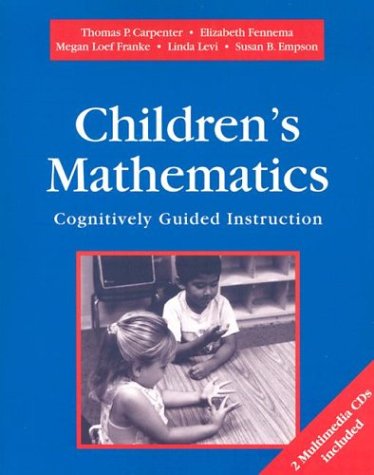SEND FEEDBACK ABOUT THIS WEBSITE!
VIDEO HELP
Sue Lampkin and Slater School
Reflecting about Teaching and Learning
Resources
Standards
Video Archive
Site Map
To view the videos on this site, you will need to download and install the following: QuickTime Player 6 or higher or Windows Media Player 9 or higher. Older versions of these players will not support the video media files on this site. You may also need Acrobat Reader (for PDF documents) and the Flash Player (for assorted other media files).
Case Development:
The Carnegie Foundation for the Advancement of Teaching
|
Resources |
|
|
This groundbreaking book, first published in 1945, is quite relevant to teachers of young children. Although the author describes much more advanced mathematical concepts and problem solving than my students will encounter, I feel it is essential that I am familiar with heuristic reasoning. This overarching approach to a variety of situations can be "expressed in simple of incisive questions: 'What is the unknown? What are the data? What is the condition? Do you know a related problem?' Deftly, Polya the teach shows us how to strip away the irrelevancies which clutter our thinking and guides us toward a clear and productive habit of mind." -quotation from Doubleday's summary of 1957 edition. |
|
"The goal of this text is to provide prospective elementary teachers with a deep understanding of the mathematics they will be called on to teach. Through a careful, mathematically precise development of concepts, this text asks that students go beyond simply knowing how to carry out mathematical procedures. Students must also be able to explain why mathematics works the way it does. Being able to explain why is a vital skill for teachers." -quotation from the publisher |
|
This professional book reports the findings of a research project that compared the subject matter knowledge of elementary school mathematics teachers in the United States and international comparisons of mathematics competency. Studies of U. S. teachers often document their insufficient subject matter knowledge in mathematics but give few examples of the knowledge teachers need to support teaching, particularly the kind of teaching demanded by recent reforms in mathematics education. This book describes the nature and development of the Profound Understanding of Fundamental Mathematics (PUFM) that teachers need to become accomplished mathematics teachers, and suggests why such teaching knowledge is more common in China than in the United States, despite the fact that Chinese teachers have less formal education than their U. S. counterparts. |
|
From the introduction: Over the last twenty years we have learned a great deal about how children come to undersatnd basic number concepts. Based on our own research and the work of others, we have been able to map out in some detail how basic number concepts and skills develop in the early grades. |
 |
From the introduction: "The Mathematical Topics section of this book provides the essays as background. The essays do not need to be read in any particular order. At the beginning of each essay, you will find a table of contents that outlines the presented material. You can skim an essay, consult its table of contents for a specific topic, or read the essay straight through." Topics include: Niumber and Counting; Operations and Facts; Algorithms and Mental Arithmetic; Data and Chance; Geometry; Measurement; Reference Frames; Estimation and Number Sense; Patterns, Sequences, Functions and Algebra; Problem Solving. |
 |
In this series of books, The Problem Solver: Activities for Learning Problem-Solving Strategies, teachers are shown ten separate problem-solving strategies, including examples of each to present to their students, and a 4-step method to solve the problems. This 4-step method was a beginning - the forerunner for me of the QDPA√ method.
• Find Out
• Choose a Strategy
• Solve It
• Look Back
|
|
|





